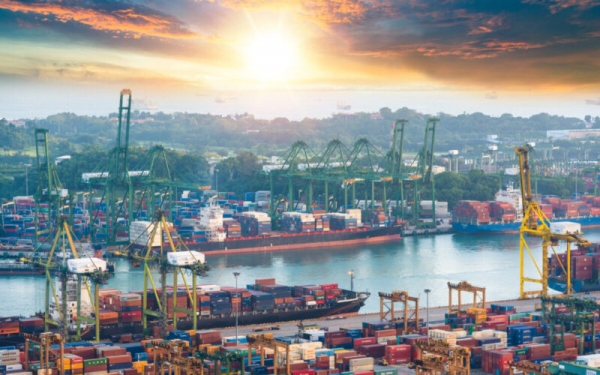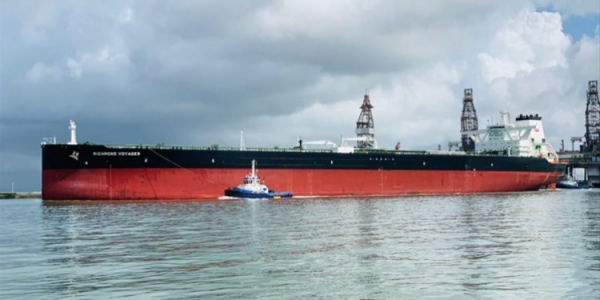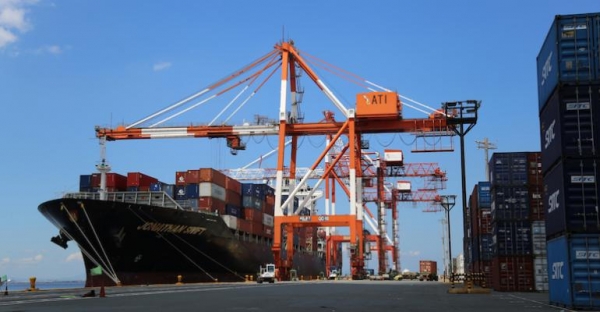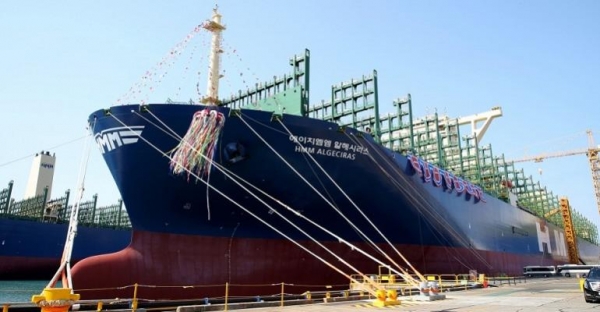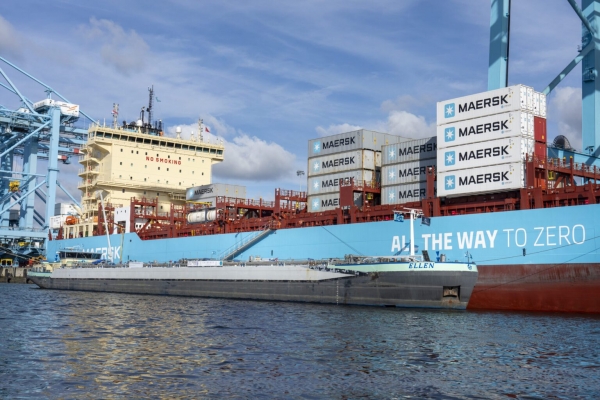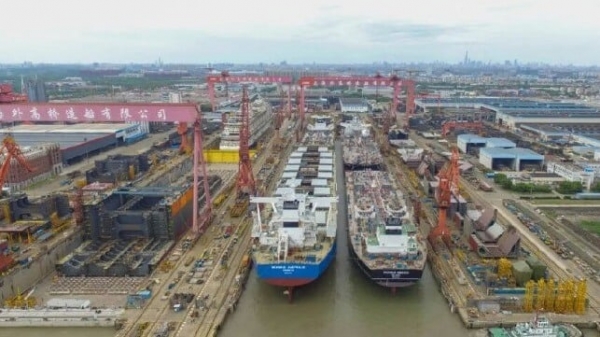News
Latest news
Singapore declared top maritime center for 10th consecutive year
Published jointly by Chinese state news agency, Xinhua, and global maritime data provider, Baltic Exchange, the report lists Singapore as the global leading maritime center, followed by London and Shanghai.
The island nation scored 95.32 out of a possible 100 points, while the maritime support services powerhouse of London scored 83.35 points and the port-city of Shanghai takes third place with 81.58 points.
Singapore has retained its position due to its strategic location, international outlook, and established ecosystem of professional global maritime services and good governance, according to the Baltic Exchange.
London and Shanghai have retained their positions of second and third place within the Index for the past four years.
Further down the top 10, there was little movement as Hong Kong, Dubai, Rotterdam, and Hamburg take fourth, fifth, sixth and seventh place, respectively.
New York and its New Jersey port dropped by two places from eighth place last year, to 10th place this year while Athens/Piraeus moved up by one place.
A relative newcomer to the Index, Ningbo-Zhoushan, sits at number nine. The Chinese city’s ranking amongst the top 10 is primarily due to it being the busiest port in the world in terms of cargo tonnage.
READ: PSA implements AI-based digital solution in Singapore
A total of 43 maritime locations were rated as part of this report, which considers port factors including cargo throughput, number of cranes, length of container berths and port draught.
Hapag-Lloyd increases rates from Middle East and Indian Subcontinent to US East Coast and Gulf Coast
Hapag-Lloyd announced a General Rate Increase (GRI) / General Rate Adjustment (GRA) from the Middle East and Indian Subcontinent to the United States East Coast and Gulf Coast for cargo transported in 20’ and 40’ dry, reefer and special containers, including high cube equipment.
This rate increase of US$200 per container will be applicable to all types of boxes from 1 November and will be valid until further notice.
Middle East and Indian Subcontinent include India, Bangladesh, Sri Lanka, Pakistan, United Arab Emirates, Bahrain, Oman, Kuwait, Qatar and Iraq.
Iranian Navy Seizes Two Foreign Vessels for Alleged Fuel Smuggling
The Iranian Navy has recently seized two foreign vessels on charges of fuel smuggling, carrying approximately 1.5 million liters of oil. These seizures occurred earlier in the week.
The vessels in question were taken to the Mahshahr port, where authorities detained 37 crew members. The crewmembers have been handed over to judicial authorities for further legal proceedings.
Adm. Mohammad-Sharif Shirali, deputy commander of the IRGC Navy's Third Naval Zone, was quoted by the Iranian Tasmin News Agency, explaining that these vessels were apprehended while attempting to smuggle oil and gas from the Islamic Republic within the Persian Gulf. He mentioned that the vessels had been under close surveillance for the past two days, and the seizure was executed in accordance with judicial orders.
This incident is not the first time Iran has intercepted fuel-carrying vessels on smuggling charges within the Persian Gulf. A notable recent case involved the Bahamas-flagged oil tanker RICHMOND VOYAGER, which was seized after colliding with an Iranian vessel in the Sea of Oman in July.
DP World eyes logistics and supply chain expansion in SE Asia
“As we seek to grow our legacy ports & terminals business, we are also working to significantly enhance our capabilities within the fuller spectrum of supply chain solutions – from landside logistics and warehousing to freight forwarding and industrial parks,” Glenn Hilton, CEO & Managing Director, Asia Pacific for DP World, tells Seatrade Maritime News. This dovetails with a global ambition to become an end-to-end logistics provider.
DP World has terminals in Laem Chabang in Thailand, Ho Chi Minh City in Vietnam, and Manila and Batangas in the Philippines. It is also growing a presence in Indonesia with projects and terminals in Belawan in Sumatra and Gresik in Java, which we covered in more detail here.
Across it’s Asia – Pacific portfolio of 18 terminals in Asia – Pacific DP World saw 3.1% volume growth in the first half of 2023 – this compared to a 2% decline for its global terminal business as a whole.
Hilton says they continue to be optimistic about their Asian terminals business and Southeast Asia highlights growth in the Philippines.
“For example, our Batangas and Manila ports, which are managed by Asian Terminals Incorporated where DP World is a shareholding partner, handled a consolidated container throughput of over 384,000 TEU in the first quarter of 2023, representing 19.8% year-on-year growth,” he says.
“The Port of Batangas is the Philippines’ busiest container, passenger and car carrier port and a key link with the Asia-Europe trade corridor.”
In 2021 DP World set-up in Asia-Pacific regional headquarters in Singapore which Hilton notes is a “regional point of convergence” for its business partners. Focus is on working with these partners on logistics and supply chain in specific verticals.
“Within Southeast Asia, DP World is on the lookout for suitable opportunities to help streamline the flow of trade, especially for the automotive, technology, health and consumer goods sectors. Our strategy in the region is centered on providing customers with integrated solutions and servicing new markets,” he says.
One such partnership is a majority stake DP World acquired in Korean multi-modal transport specialist UNICO in 2020, which operates in 20 countries. “UNICO’s strong position in the fast-growing transcontinental rail freight market between East Asia, Central Asia and Russia is aligned with DP World’s strategy to bolster its logistics capabilities and expand within APAC and Europe,” Hilton explains.
Russia Labels Global Transport Union ITF ‘Undesirable’ Organization
Russia has designated the International Transport Workers’ Federation (ITF) as an “undesirable” organization in a step the union said will have significant ramifications for 1.6 million Russian members, the ITF said on Friday.
The label “undesirable” has been applied to dozens of foreign groups since Moscow began using the classification in 2015, and effectively bans an organization outright.
Russia’s Prosecutor General said in a Sept. 5 statement that the ITF posed a “threat” to Russia’s constitutional order.
Russia’s transport ministry declined to comment when contacted on Friday.
The London-headquartered ITF said it refuted all allegations and said it existed “to protect and improve workers’ lives.”
“This designation will have significant ramifications for the 1.65 million Russian transport workers affiliated to the ITF at the time this designation was announced,” it said in a statement on Friday, adding that tens of thousands of Russian seafarers, who sail on ships covered by ITF-approved collective agreements, would be impacted.
“ITF continues to treat Russian seafarers the same as any other seafarer seeking our assistance and support.”
The ITF is an affiliate-led movement of 740 transport workers’ unions across the world, and says it is “the voice of the 20 million transport workers who move the world.”
The Russian branch of Greenpeace said in May it would shut down after authorities declared the environmental group undesirable.
Maersk in short-term green methanol deal with Equinor
Equinor will supply green methanol to the Danish shipping line from September 2023 when the 2,100 TEU vessel goes into service and the first half 2024. The agreement bridges a gap until long supply from an e-methanol plant in Southern Denmark operated by European Energy comes on stream.
Equinor will supply green methanol through its production plant at Tjeldbergodden with bunkering in the Port of Rotterdam.
The world’s first methanol-powered containership for Maersk will be named in Copenhagen later this month after which will operate of a Northern Europe – Baltic loop.
For its delivery voyage between South Korea and Denmark the vessel was supplied with green methanol by OCI Global in multiple bunkering operations.
“It is critical to get energy majors to the table and start supplying future fuels at scale. This is the form of engagement we need to continue accelerating the pioneering journey towards a green fuel economy for global shipping. With more than 100 methanol enabled vessels on order across the industry, the demand for green fuel production is rising and will continue to do so in the years to come,” said Rabab Boulos, Chief Infrastructure Officer at AP Moller - Maersk.
Maersk has been a forerunner in bringing methanol as a fuel into container shipping and has further 24 methanol dual-fuel containerships on order.
Hapag-Lloyd bid for HMM sparks Korean rift over international ownership
Shareholders believe the synergies will offer better value to them, while industry bodies are concerned that logistics skills and capital will be lost if Hapag-Lloyd is successful in its bid. But analysts believe the major beneficiaries will be shippers.
Bids for the 40% combined stake in HMM, currently held by the state banking entities Korea Development Bank (KDB) and the Korea Ocean Business Corporation (KOBC) have been the subject of preliminary bids, with SM Line expected to be a key bidder in the process.
Analysts in Europe believe that if Hapag-Lloyd can convert the 40% stake into a controlling share, giving them the full control over HMM’s assets, it would result in an intensification in competition between the top lines.
Xenata chief analyst Peter Sand argues that going forward carriers will want to reduce their slot costs and for Hapag-Lloyd the sale of HMM represents “an opportunity to let go the more expensive time charter deals and it will see a significant upgrade in the size and efficiency of its fleet.”
Hapag would gain 24 mega-carriers of over 20,000 teu, half of which are owned with the others chartered. Another 12 ships of 13,000 teu are on order with already delivered to HMM, with 12 smaller vessels also on order. Nine of these are 9,000 teu methanol powered dual fuel vessels.
“Carriers will be looking at unit costs in order to reduce pricing, the larger the ships the better economies of scale and the lower those unit costs,” said Sand, in the end that will contribute to greater competition.
It would be necessary for Hapag-Lloyd to control the whole company for any synergies to be properly realised, added the semi-retired analyst and consultant Mark McVicar.
He said that the South Korean government needs to decide on whether it is better to maintain a flag carrier or if the company will be better served as part of a larger merged company.
Korea’s government has decided to go for an auction on its shares which suggests it’s decided on a merger as a better strategy.
“If having been through the Hanjin debacle and it [the government] decided HMM is best merged with something else, then it’s probably the best time to make the sale,” added McVicar.
He went on to say that this is “the most realistic time in the cycle to make the sale,” given that the carriers are emerging from the pandemic years with flush balance sheets, but “they will all be hurting now as they head into bigger losses”.
Having apparently settled on a strategy of merger the government has sparked a debate over whether the foreign carrier would benefit Korean logistics, or act as a drain on talent.
Minority shareholders in HMM have backed the sale to the German carrier, according to local reports.
The Korean Times reports: “According to the financial industry and the minority shareholders' association, some of the minority shareholders of the group have been gathering shareholder proxy statements through their online community set up in Naver Cafe platform, aiming to endorse Hapag-Lloyd as the most suitable candidate for the acquisition.”
The view among some shareholders is that KDB and KOBC have taken decisions “that undermine shareholder value in HMM,” the head of the minority shareholders' alliance Hong Yi-pyo reportedly said.
Minority shareholders expect that if HMM is acquired by Hapag-Lloyd share dividends will increase as synergies are realized.
However, the Korea JoonAng Daily reported that there are “Concerns that the sale of the nation's largest shipping firm to a foreign entity could undermine local maritime industry competitiveness and result in capital outflow, KDB is leaning toward domestic buyers.”
Further concerns were raised about the ability of domestic buyers’ ability to raise the required cash without support from private equity, which would “pose a threat to the stability and sustainability of HMM.”
Meanwhile, it had been expected that SM Line would bid, but local reports suggest that the carrier’s parent company Samira Midas could not meet the $3.8 billion starting price. Three South Korean bidders, Harim Holdings, Dongwon Group and LX Holdings and the German carrier Hapag-Lloyd have made the cut into the second round of bidding.
Assessment of the preliminary bids is expected to be completed by the end of this week with an announcement on which companies have made it through to the second round of the process.
A preferred bidder will then be selected with the sale expected to be completed by the end of this year.
Maersk Marks First European Green Methanol Bunkering in Rotterdam
The port of Rotterdam has for the first time refueled a methanol-powered container ship as the shipping industry turns to the technology to cut its emissions, methanol producer OCI Global said on Tuesday.
The Maersk-owned ship began its 21,500 km (13,359 mile) journey to Copenhagen from South Korea’s Hyundai Mipo Dockyard on July 10.
It also refueled in Singapore, another major shipping hub before its stop-over on Tuesday in Rotterdam, Europe’s largest port and ship-refueling hub, as the entire voyage is powered by green methanol.
A low carbon fuel, green methanol is produced from renewable feedstocks, including hydrogen and biomethane and the shipping industry hopes it will help it to achieve a goal of net zero emissions by 2050.
Maersk, one of the world’s largest shipping companies, will name its new vessel when it reaches Copenhagen in September.
It has ordered another 24 of the vessels that can run on conventional fuel oil as well as methanol.
In all, consultancy DNV expects 30 of the new ships will be launched this year and the number will exceed 200 by 2028.
DP World to add 3 million teu of port capacity by end-2023
Key expansions will be completed this year in Caucedo (Dominican Republic), including an additional 1.2 million TEU, Yarimca (Türkiye) projected an additional 579,000 TEU, Sokhna (Egypt) adding 500,000 TEU Jeddah (Saudi Arabia) with an additional 200,000 TEU, among other key markets.
The expansions will take its total gross capacity to 93.6 million teu, aimed at meeting growing demand in key trade markets. The global port operator manages currently approximately 9% of the world’s handling capacity, putting it among the top five global port operators.
UK’s supply chain advisors, Drewry, forecast global container throughput will grow to 932 million TEU by 2025, up from 858 million TEU in 2021.
"We are committed to investing in our infrastructure to meet the growing demand for trade. These capacity additions will further strengthen our position as a leading global supply chain solutions provider connecting economies, businesses, and consumers around the world," said Sultan Ahmed Bin Sulayem, Group Chairman and CEO of DP World,
"We have to take a longer-term view of global economics, looking at how demand will change and how we can meet it in the most efficient way. Our medium-term target is to reach 100 M TEUS a year, subject to demand," added Tiemen Meester, COO Ports & Terminals, DP World,
Alongside the physical expansion, the projects also focus on digitalization - implementing new technology and modern Terminal Operating Systems, which will further increase capacity by automating and streamlining operations within each port, thereby enabling greater flow of trade and more efficient processes for customers.
In February, DP World won a major concession to develop, operate and maintain the Tuna-Tekra mega-container terminal at Deendayal port on the western coast of India. Once complete, the terminal will include a 1,100-metre berth and handle annually 2.19 million teu, helping unlock future container traffic growth in India, catering to exports and imports from Northern, Western and Central India, reducing logistics cost and enhancing efficiencies across supply chains.
China Edges Ahead of Greece as Largest Ship owner by Gross Tonnage
Chinese officials are highlighting new research from the UK-based Clarkson Research Service that shows that China has become the world’s largest shipowner based on gross tonnage surpassing Greek shipowners which have been the largest for the past decade. While Greek has a commanding lead in the more significant deadweight tonnage (dwt) measuring cargo capacity, China is still trumpeting the development calling it a demonstration of the emergence of their economy and a shift in world shipping.
Clarkson’s data reflects the rapid growth in the Chinese fleet which analysts said began in approximately 2015. The Chinese-owned fleet is reported to have recently surpassed Greece with a total of 249.2 million gross tons compared to Greece which currently stands at 249 million gross tons. China now has a small lead with a 15.9 percent market share based on the measurement of enclosed space of vessels. China also has a younger overall fleet helping according to Clarkson to reach $180 billion in value to $163 billion for the Greek-owned fleet.
China and Greece dominate the shipping industry. Japan is a distance third now at 181 million gross tons. Both South Korea and the United States own 66 million gross tons each and other leaders including Germany have slipped further down in the rankings.
Greek shipowners had dominated the statics for a decade since they surpassed Japanese shipowners in 2013. Greece still however has a commanding lead in overall cargo capacity with 423 million dwt or an 18 percent market share. Accounting for part of the difference is Greece’s dominance in the global tanker market where it holds a 25 percent market share as well as in liquified natural gas carriers where it currently holds 21 percent of the market, having grown its share three percent in the past decade.
"China's shipping industry has been in a continuous state of development, and our role as the world's largest manufacturing hub remains steadfast. These factors contribute to the high ranking," Li Yanqing, secretary-general of the China Association of the National Shipbuilding Industry, told the Global Times.
In addition, they are highlighting the continued opportunities for growth noting that China currently accounts for 22 percent of global exports and 33 percent of container exports. The officials explained that China has been building dry bulk vessels as it expands its commodity imports of grain and coal and raw materials used in manufacturing. China’s two main shipping companies, COSCO and China Merchants have grown rapidly also focusing on containerships, which in part accounts for the lag between dwt and GT.
Clarkson analyst Stephen Gordon reports that China’s shipping industry is benefitting from strong freight volume, its dramatic growth in shipbuilding, and the growth of its financial sector. Chinese shipbuilding for example overall produced more than 21 million dwt of new ships in the first half of 2023 while taking in orders for nearly 38 million dwt. China’s orderbook is up 20 percent to nearly 124 million dwt, although a large portion of the shipbuilding is for export. Companies such as Mediterranean Shipping Company (MSC) have turned to China to finance and own its new generations of large vessels.
Greek shipowners have lagged overall in newbuilding orders while more active in the secondhand market which helped China to catch up. Analysts point to the slow growth in the tanker market and the emergence of other competitors in LNG and LPG transport. China is eighth in the gas carrier market behind Japan and South Korea both of which are expanding in the segment.
Looking ahead, Clarkson points to the emerging complexities in trade and the shipping market. They highlight the drive to decarbonize shipping which is expected to have a significant impact on ownership and the makeup of the ship-owning market going forward.






















